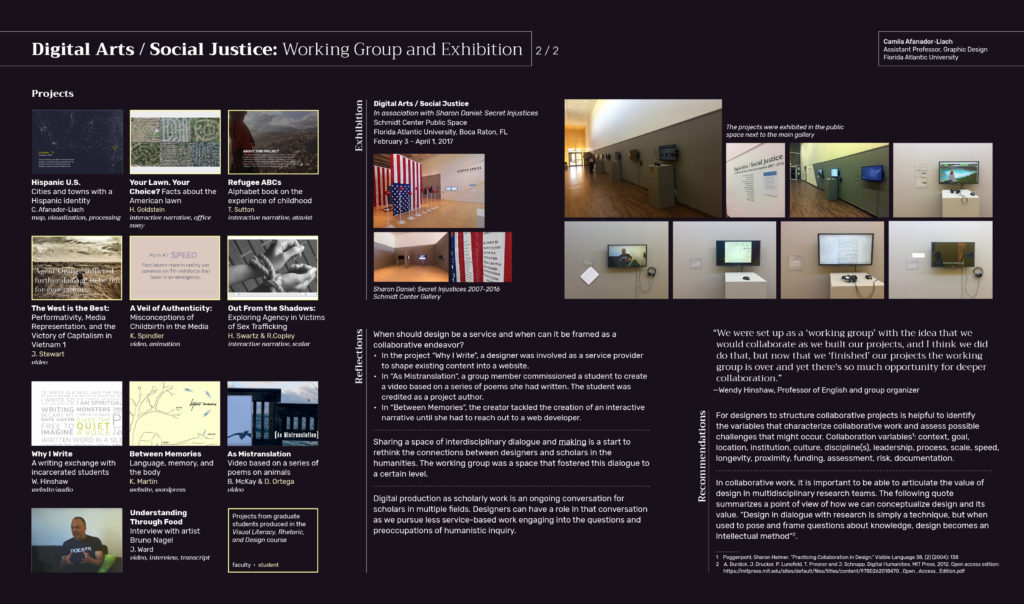Converge in L.A.
I recently came back from Los Angeles, where I attended my first DEC AIGA Conference held at the School of Cinematic Arts at USC. The conference was titled “Converge: Disciplinarities and Digital Scholarship” and was organized by six faculty members from different institutions around the U.S. bringing together scholars and educators interested in the intersection of design with other disciplines. The conference was a space to connect with colleagues with whom I share interests and engage in conversations about design education that contribute to my constant reflections on my academic career. I was part of the poster session, where I showed a poster about the Digital Arts / Social Justice Exhibit I was part of this year at FAU (see poster below).
During the conference I attended two workshops. The first one was “Maps, Friendly Mapping Tools, and Open Data” by David Ramos. He presented a collection of tools and open data sources for creating maps. I found the session to be helpful in clarifying some concepts regarding map making as well as providing open data sources. I also attended “Using Digital Archives To Teach Global Design History” by Dori Griffin. In preparation to teaching Graphic Design History next spring, this workshop was a space for design educators to share resources used for teaching this class. The emphasis was in online digital archives that provide a wider scope of materials than the ones found traditionally in textbooks. A long-term goal that came with participating of this workshop is to produce a publication that contributes to an almost inexistent literature about pedagogical strategies for teaching this course. I look forward to be part of this ongoing conversation as I prepare this course for the first time with an ongoing conversation with my historian sister.
During the rest of the conference I attended long paper presentations and lighting presentations in diverse subjects. I was mostly seeking to expand my views on how design is conceptualized around humanistic research. I found often descriptions on how design is a mediating apparatus and a working method that support humanistic inquiries. A common thread that appeared in the description of projects in the digital humanities and that was mentioned by keynote speaker Johanna Drucker, was a focus on generative systems, ones that are not about the completion of tasks as in typical UI/UX design but systems as environments of probabilities. Interfaces that provide multiple points of view and not the presentation of a final statement. Alongside the points of view of the role of designers in digital scholarship, I encountered several valuable contributions to the conversation, ranging from a collection of visual thinking methods and low-res prototyping, to inquiries into the role of the designer in affecting how we see the world of ideas. I found that often the most rich perspectives about the latter came from non-designers. I enjoyed being part of the conference and look forward to keeping these subjects around in my future work.


